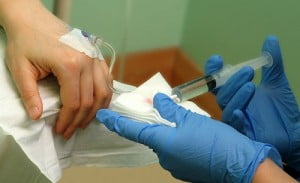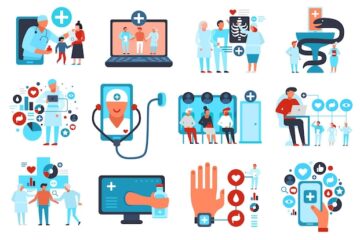
A few most cancers patients and their insurers are seeing their payments for chemotherapy bouncesharply, reflecting elevated drug expenses and hospitals’ push to shop for oncologists’ practices and theninvoice at higher fees.
patients say, “‘I’ve been dealt with with Herceptin for breast cancer for numerous years and it was usually$five,000 for the drug and all of sudden it’s $16,000 — and i was in the equal room with the equal health practitioner same nurse and the identical duration of time’,” stated Dr. Donald Fischer, leader clinicalofficer for Highmark, the most important health plan in Pennsylvania.
Like different insurers, Highmark located that when hospital structures offered medical doctors’ practices, chemotherapy charges rose due to the fact physicians’ places of work were then deemed “health center outpatient centers” and will rate more for overhead.
Now insurers are pushing back. In what can be the primary circulate of its type, Highmark in April stopped paying higher charges for chemotherapy capsules given to patients whose docs work for hospitals,alternatively paying the identical fee they could have had the medical doctor remained impartial.
The pass is being watched closely through insurers around the us of a, and “a few will in all likelihoodcomply with healthy,” said Kathryn Fitch, a healthcare control consultant at Milliman, whose 2013 studydocumented chemotherapy expenses in health facility outpatient settings ran as a lot as fifty three percentbetter than in docs’ places of work.
“The pendulum has swung towards hospitals buying up health practitioner practices to get higherrevenue,” Fitch said.
different insurers are attempting extraordinary methods to preserve down costs. WellPoint, one of thecountry’s largest insurers, will quickly start paying oncologists an advantage of $350 a month per affected person for sticking with unique, less–high priced, chemotherapy regimens. Florida Blue has partnered witha few doctor practices to create cancer–unique “accountable care groups” that praise medical doctors ifthe new agencies store money at the same time as hitting quality targets.
And UnitedHealthcare, the most important insurer with the aid of marketplace share, is increasing a pilotchallenge that uses flat, or “bundled,” payments for the remedy of certain cancers – which include thecost of medication.
targeting most cancers remedy
changing the manner cancer care is paid for is a top priority for insurers and employers, with treatmentscosting the U.S. greater than $127 billion every yr. that is projected to grow 27 percentage from 2010 to 2020 because the populace ages, stated epidemiologist Robin Yabroff on the country wide cancerInstitute.
in the meantime, the average monthly price of a emblem–name cancer drug has doubled to $10,000inside the past decade, in line with a may report from the IMS Institute for Healthcare Informatics.
That’s critical due to the fact the conventional way to pay for cancer tablets given in a doctor’sworkplace is to reimburse the doctor for the average income charge of the drug, plus an introducedpercent to cowl overhead and a de facto profit margin. In Medicare, for example, the delivered percent is 6 percent.
Highmark’s Fischer and others say that price technique creates an incentive to use higher-priced pills — and greater of them.
“if you provide a 10,000 drug, it’s $six hundred [for the doctor]. in case you deliver a $a hundred drug, you get a margin of $6,” said Fischer.
He said that such “purchase and invoice” applications are being phased out in other specialties, howeverhave persevered in most cancers care due to the fact insurers fear losing oncologists from their networks.
Administering chemotherapy in health facility outpatient settings is even more luxurious, studies display. IMS health reported that in step with-dose bills have been 189 percentage higher for logo–name drugsgiven in clinic outpatient settings than in impartial physician places of work.
a number of that introduced burden falls on sufferers, who paid $134 more in line with dose on commonfor cancer capsules given in health center outpatient settings than in docs’ offices, the documentlocated.
whilst the health law limits annual out-of-pocket expenses to $6,350 for individuals and $12,seven hundred for families, paying such sums out of pocket is daunting for lots purchasers.
research of breast most cancers patients display that even small increases in copayments led some tostop remedy.
the amount “is unachievable for some of the sufferers we constitute,” stated Brian Rosen, senior vice chairman at the Leukemia & Lymphoma Society. “sufferers who need lifesaving healing proceduresregularly can’t come up with the money for get entry to to the treatment.”
The hassle is in all likelihood to develop as greater physician practices are bought through hospitals. In a recent six-month duration, for example, Medicare bills tripled for chemotherapy in health facilityoutpatient settings and dropped 14 percentage in medical doctors’ places of work.
In March, the advisory organization MedPac recommended that Medicare reduce or dispose ofdifferences in price costs among outpatient departments and medical doctor offices for many offerings.
Drugmakers worry about Innovation
As extra interest makes a speciality of charges, the drug industry has fired returned, worried that standardized regimens will discourage the innovation that it says has led to better survival prices.
Such drug regimens or bundled payments may want to “create big limitations and disincentives in the direction of persisted innovation,” stated Randy Burkholder, vp of coverage at the Pharmaceutical studiesand producers of the united states, the industry’s lobbying arm.
a few physicians additionally reject a one-size–suits–most approach, concerned about effect onsatisfactory.
Insurers insist they are able to lower cost without hurting quality or innovation. Wellpoint, for instance,said it expects to shop at the least three percent on standard most cancers prices via its plan to givebonuses to medical doctors who follow exact treatment regimens, or “pathways.” Such regimens are basedon analyses of effectiveness and expenses with the aid of personal corporations, along with U.S. Oncology, or by way of insurers’ themselves.
to this point, proof of financial savings is inconclusive. a few insurers have stated tremendous savings,whilst others have not, stated Lindsay Conway, exercise supervisor at the Advisory Board business enterprise, a consulting company that works with hospitals.
despite their own fee concerns, affected person organizations additionally explicit misgivings aboutstandardized drug regimens and flat bills, fearing they’ll inspire companies “to make treatment choicesprimarily based on fee and much less at the evidence,” Rosen stated.
Yabroff, the epidemiologist at the national cancer Institute, stated issues about satisfactory are real, and make extra research imperative in order that both “satisfactory and price are evaluated.”




